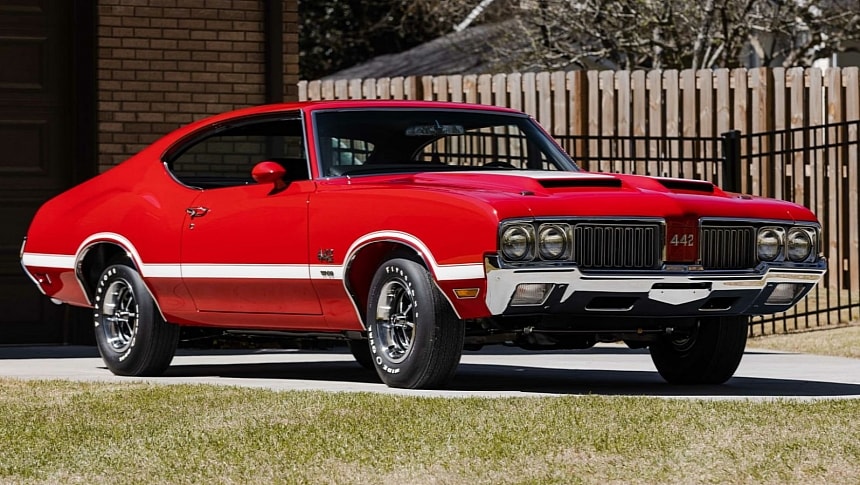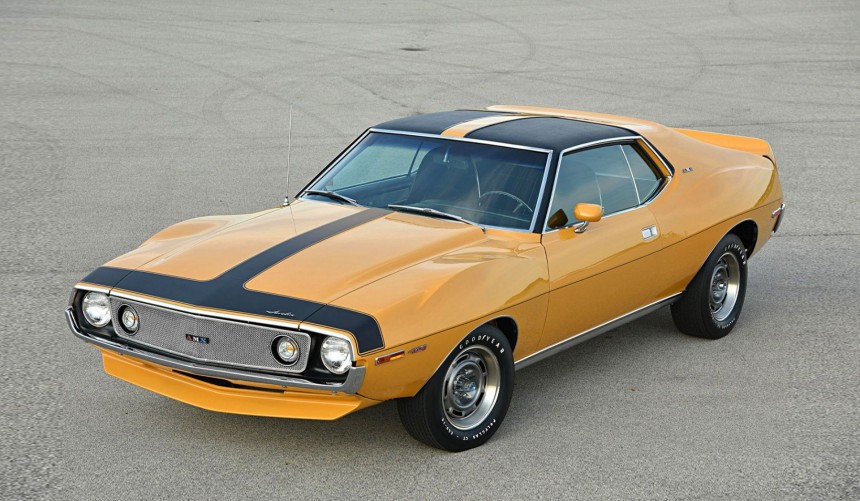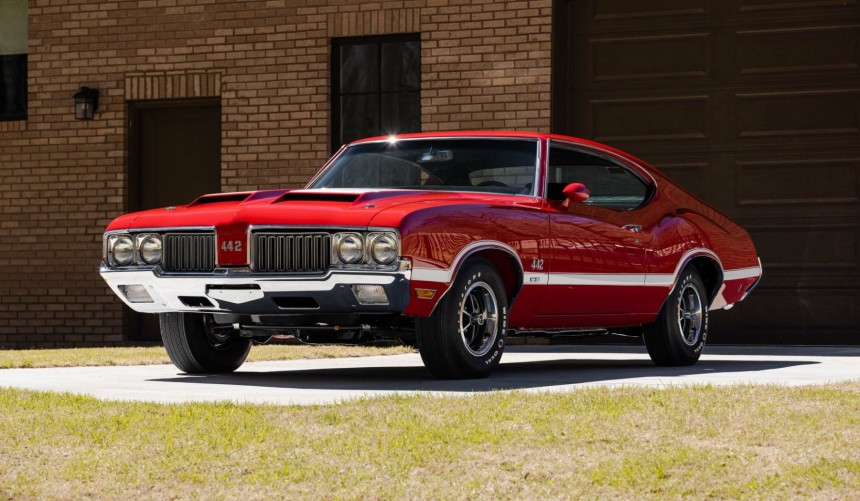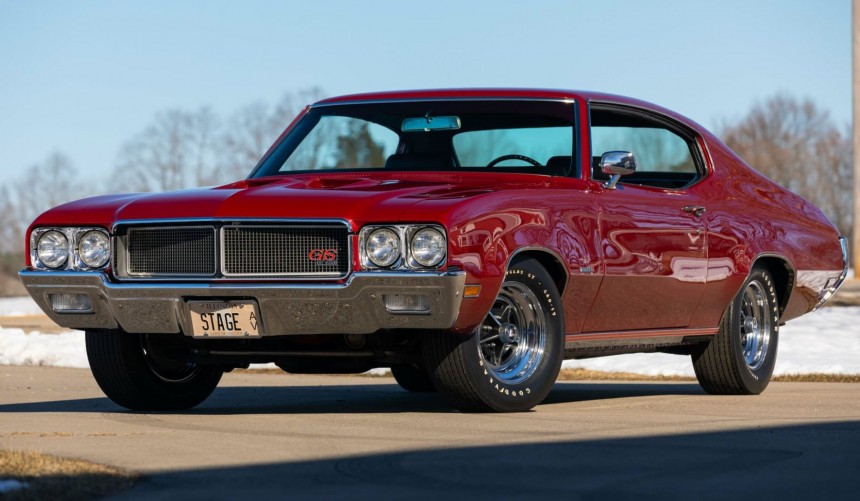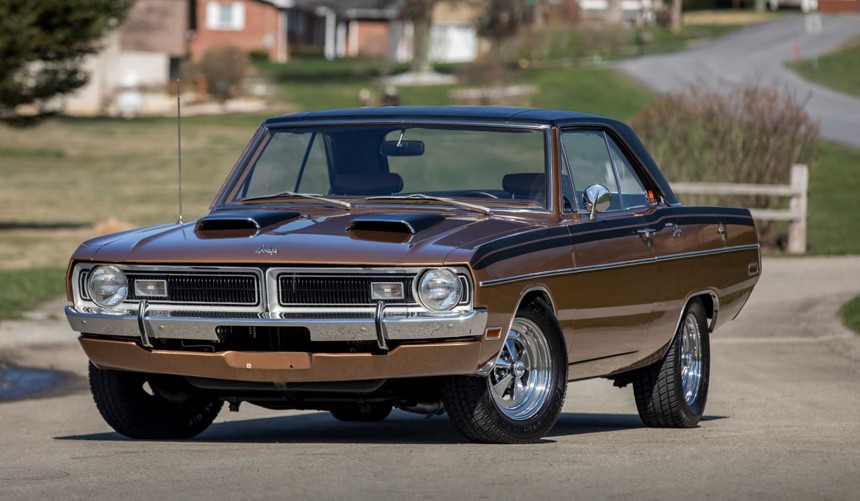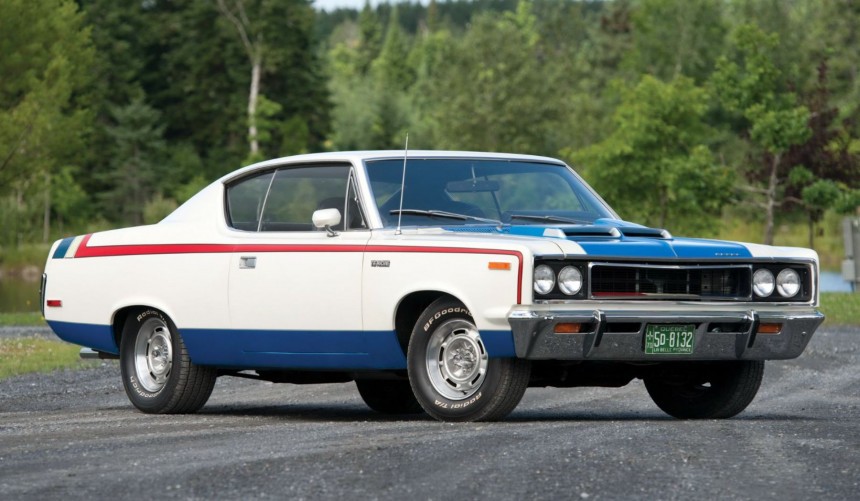During those exciting decades, the American automotive industry released some of the most iconic vehicles of all time. But while some muscle cars still enjoy a superstar status, others have faded away from the collective minds of enthusiasts, and today, they're grossly underrated.
Though high-performance versions of normal US-built passenger cars have existed earlier, most agree that the 1964 model year marked the beginning of the golden age of muscle cars.
For that memorable year, GM's excitement division introduced a new performance package for their intermediate LeMans, which added a potent V8 previously reserved for the division's full-size models.
Called GTO, that performance package became extremely popular and kickstarted a performance war that resulted in a variety of memorable muscle cars.
Even six decades later, the GTO, as well as other icons of the era such as the Ford Mustang, Chevrolet Chevelle, Dodge Charger, or Chevrolet Camaro, are some of the most highly-praised and sought-after classic cars of the era.
However, the era also gave us other terrific muscle cars that have since become grossly underrated.
Throughout the 1960s and 1970s, the American Motors Corporation (AMC) managed to keep up with Detroit's Big Three, even though it never had the same kind of budget.
It did that by offering well-built, innovative, and, in most cases, cheaper alternatives to its rivals' most popular models.
One of those alternatives was the Javelin, AMC's answer to the pony car craze started by the Mustang in 1964. Introduced in 1967 as a 1968 model, the Javelin was a great car that soon earned some muscle.
In the mid-1968, the model line received the performance-oriented Go-package, which, among several improved hardware, added a 390-ci (6.4-liter) V8 rated at 315 hp and 425 lb-ft (576 Nm) of torque.
For the 1970 model year, the 390 was improved to 325 hp, but AMC didn't stop there. Then, a year later, a 330 hp 401-ci (6.6-liter) was added for the new, thoroughly redesigned second generation, which also welcomed a new, performance-oriented trim dubbed AMX.
Apart from the terrific street-legal performance versions, the Javelin also made waves in the Trans-Am series, winning two consecutive championships in 1971 and 1972.
When talking about the spark that ignited the muscle car craze, most people mention the 1964 Pontiac GTO, but that year, fellow GM division Oldsmobile introduced its own high-performance intermediate.
Called 4-4-2, the perfromance package was available for either the Cutlass or F-85 and featured a special, police cruiser-derived four-barrel 330-ci (5.4-liter) V8 rated at 310 hp and 355 lb-ft (481 Nm) of torque, as well as an improved suspension system.
Though not as popular as the GTO, the 1964 4-4-2 proved a worthy rival, encouraging Olds to develop it further for the next model years.
A year later, the muscle car received a bigger 345-hp 400-ci (6.5-liter) V8, and by 1967, the last year of the first-gen 4-4-2, it was available with an optional 360-hp W-30 400 and a host of improvements that made it one of the most impressive high-performance intermediates on the market.
For the second generation, which spanned from 1968 to 1972, the 4-4-2 became a separate model.
Based on the redesigned, third-gen Cutlass, the high-performance version continued to be available with the W-30 400 until 1970, when the engine was replaced by the 455 (7.5 liters), which, at its height, produced 370 hp in W30 guise.
The 4-4-2 was also used as the basis for the Hurst/Olds, the GM division's most lethal muscle car.
In 1965, Buick introduced their take on the GTO. Based on the A-body Skylark, the performance package was called Gran Sport.
Powered by a 325-hp, 401-ci (6.6-liter) "nailhead" V8 marketed as 400 to avoid GM's self-imposed displacement ban, the Gran Sport wasn't the fastest performance-oriented intermediates, but it was one of the most luxurious and best-handling of them all.
The GS was continually improved in the years that followed. In 1968, the thoroughly redesigned version became a separate model, and although it still had the 400 under the hood, with the Stage 1 option, it benefited from an increase to 350 hp.
By 1970, Buick's muscle car was available with a larger 455-ci (7.5-liter), which, when equipped with the Stage 1 option, delivered 360 hp and 510 lb-ft (691 Nm) of twist - the highest torque figure of any American production car until the Dodge Viper was introduced two decades later.
That year also marked the debut of the ultimate GS: the GSX (Gran Sport eXperimental), which came with a distinct, more flamboyant appearance package.
Utill it was discontinued in 1972, the Skylark-based Gran Sport remained arguably the best-handling muscle car on the market.
Apart from their widely successful intermediate and pony car-based performance models, Dodge and Plymouth were among the carmakers that began offering budget-friendly performance in smaller packages during the late 1970s.
While Plymouth introduced the popular Valiant-based Duster in 1969, Dodge answered with a similar model: the Dart Swinger.
A flashy two-door hardtop, the compact looked like a small Road Runner mixed with a Barracuda front end rather than its Dodge siblings.
Under its scooped hood, it came with a 340-ci (5.6-liter) V8 that only made 275 hp. However, since it was smaller than other muscle cars, the Swinger was also lighter, so its power-to-weight ratio earned it a great reputation on the streets and, of course, muscle car credentials.
Despite its size, the Dart Swinger 340 was an aggressive-looking, highly potent street weapon with an attractive price tag that's grossly underrated today.
It's safe to say that most of AMC's greatest vehicles are more or less underrated these days, but when it comes to muscle cars, few are more underrated than The Machine.
AMC entered the high-performance intermediate market in 1969 with the SC/Rambler, a highly potent, dragstrip-oriented weapon developed in collaboration with Hurst Performance.
Though produced in limited numbers, the model was highly praised, so AMC decided to bring back the performance recipe and cook up a rabid version for the Rambler's successor, the all-new 1970 Rebel.
Thus, the high-performance version of the Rebel was introduced with one of the most badass names in the history of muscle cars: The Machine.
Like its predecessor, the new high-performance weapon came with a series of chassis improvements and a special version of AMC's biggest V8, a 390-ci (6.4-liter) powerhouse rated at 340 hp and 430 lb-ft (583 Nm) of torque.
Although not as fast or as powerful as other 1970 muscle car icons, the Machine could hold its own, and best of all, it was a bit more affordable.
Today, knowledgeable muscle car collectors are a lot more aware of how great the Machine really was, so the value of a surviving model is on a constant rise.
However, many muscle car enthusiasts have either forgotten about this terrific AMC, or they're quick to dismiss it solely because it "only" made 340 horses.
For that memorable year, GM's excitement division introduced a new performance package for their intermediate LeMans, which added a potent V8 previously reserved for the division's full-size models.
Called GTO, that performance package became extremely popular and kickstarted a performance war that resulted in a variety of memorable muscle cars.
Even six decades later, the GTO, as well as other icons of the era such as the Ford Mustang, Chevrolet Chevelle, Dodge Charger, or Chevrolet Camaro, are some of the most highly-praised and sought-after classic cars of the era.
However, the era also gave us other terrific muscle cars that have since become grossly underrated.
1968–1974 AMC Javelin
It did that by offering well-built, innovative, and, in most cases, cheaper alternatives to its rivals' most popular models.
One of those alternatives was the Javelin, AMC's answer to the pony car craze started by the Mustang in 1964. Introduced in 1967 as a 1968 model, the Javelin was a great car that soon earned some muscle.
In the mid-1968, the model line received the performance-oriented Go-package, which, among several improved hardware, added a 390-ci (6.4-liter) V8 rated at 315 hp and 425 lb-ft (576 Nm) of torque.
For the 1970 model year, the 390 was improved to 325 hp, but AMC didn't stop there. Then, a year later, a 330 hp 401-ci (6.6-liter) was added for the new, thoroughly redesigned second generation, which also welcomed a new, performance-oriented trim dubbed AMX.
Apart from the terrific street-legal performance versions, the Javelin also made waves in the Trans-Am series, winning two consecutive championships in 1971 and 1972.
1964-1972 Oldsmobile 4-4-2
Called 4-4-2, the perfromance package was available for either the Cutlass or F-85 and featured a special, police cruiser-derived four-barrel 330-ci (5.4-liter) V8 rated at 310 hp and 355 lb-ft (481 Nm) of torque, as well as an improved suspension system.
Though not as popular as the GTO, the 1964 4-4-2 proved a worthy rival, encouraging Olds to develop it further for the next model years.
A year later, the muscle car received a bigger 345-hp 400-ci (6.5-liter) V8, and by 1967, the last year of the first-gen 4-4-2, it was available with an optional 360-hp W-30 400 and a host of improvements that made it one of the most impressive high-performance intermediates on the market.
For the second generation, which spanned from 1968 to 1972, the 4-4-2 became a separate model.
Based on the redesigned, third-gen Cutlass, the high-performance version continued to be available with the W-30 400 until 1970, when the engine was replaced by the 455 (7.5 liters), which, at its height, produced 370 hp in W30 guise.
The 4-4-2 was also used as the basis for the Hurst/Olds, the GM division's most lethal muscle car.
1965-1972 Buick Gran Sport
Powered by a 325-hp, 401-ci (6.6-liter) "nailhead" V8 marketed as 400 to avoid GM's self-imposed displacement ban, the Gran Sport wasn't the fastest performance-oriented intermediates, but it was one of the most luxurious and best-handling of them all.
The GS was continually improved in the years that followed. In 1968, the thoroughly redesigned version became a separate model, and although it still had the 400 under the hood, with the Stage 1 option, it benefited from an increase to 350 hp.
By 1970, Buick's muscle car was available with a larger 455-ci (7.5-liter), which, when equipped with the Stage 1 option, delivered 360 hp and 510 lb-ft (691 Nm) of twist - the highest torque figure of any American production car until the Dodge Viper was introduced two decades later.
That year also marked the debut of the ultimate GS: the GSX (Gran Sport eXperimental), which came with a distinct, more flamboyant appearance package.
Utill it was discontinued in 1972, the Skylark-based Gran Sport remained arguably the best-handling muscle car on the market.
1969-1970 Dodge Dart Swinger 340
While Plymouth introduced the popular Valiant-based Duster in 1969, Dodge answered with a similar model: the Dart Swinger.
A flashy two-door hardtop, the compact looked like a small Road Runner mixed with a Barracuda front end rather than its Dodge siblings.
Under its scooped hood, it came with a 340-ci (5.6-liter) V8 that only made 275 hp. However, since it was smaller than other muscle cars, the Swinger was also lighter, so its power-to-weight ratio earned it a great reputation on the streets and, of course, muscle car credentials.
Despite its size, the Dart Swinger 340 was an aggressive-looking, highly potent street weapon with an attractive price tag that's grossly underrated today.
1970 AMC Rebel "The Machine"
AMC entered the high-performance intermediate market in 1969 with the SC/Rambler, a highly potent, dragstrip-oriented weapon developed in collaboration with Hurst Performance.
Though produced in limited numbers, the model was highly praised, so AMC decided to bring back the performance recipe and cook up a rabid version for the Rambler's successor, the all-new 1970 Rebel.
Thus, the high-performance version of the Rebel was introduced with one of the most badass names in the history of muscle cars: The Machine.
Like its predecessor, the new high-performance weapon came with a series of chassis improvements and a special version of AMC's biggest V8, a 390-ci (6.4-liter) powerhouse rated at 340 hp and 430 lb-ft (583 Nm) of torque.
Although not as fast or as powerful as other 1970 muscle car icons, the Machine could hold its own, and best of all, it was a bit more affordable.
Today, knowledgeable muscle car collectors are a lot more aware of how great the Machine really was, so the value of a surviving model is on a constant rise.
However, many muscle car enthusiasts have either forgotten about this terrific AMC, or they're quick to dismiss it solely because it "only" made 340 horses.
